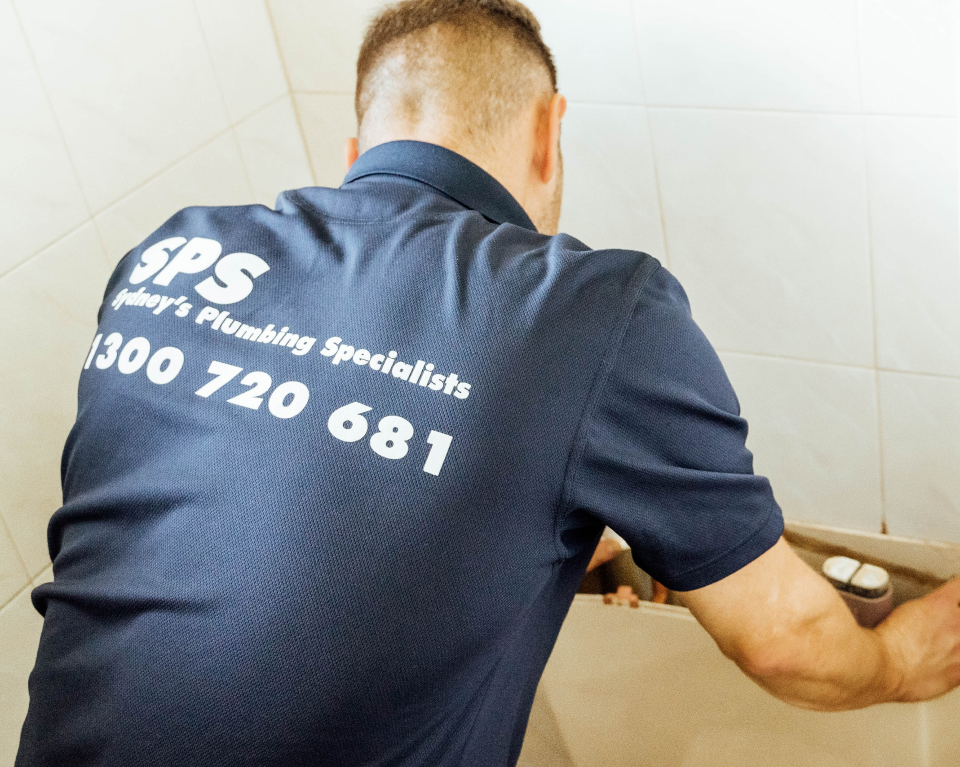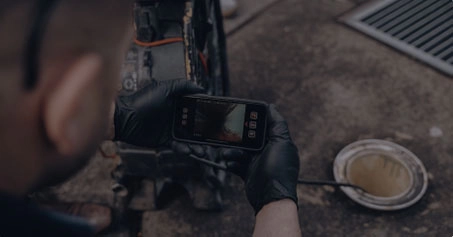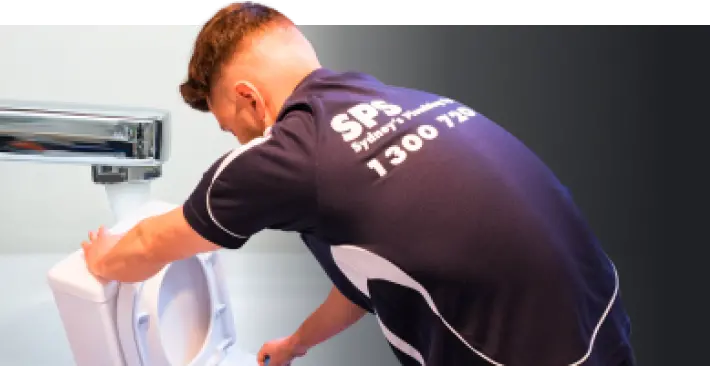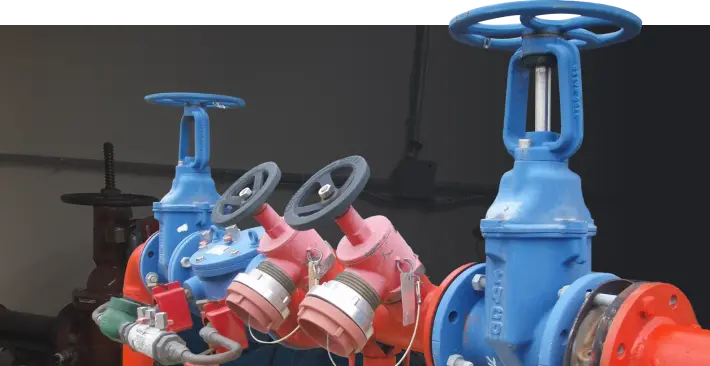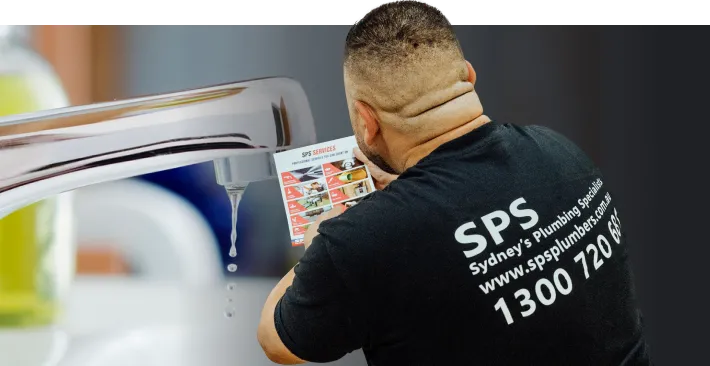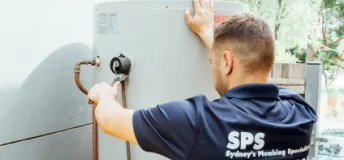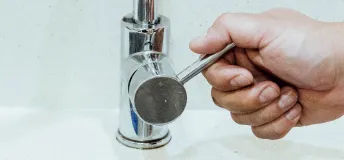A tempering valve, also known as a mixing valve, is a device used in plumbing to control the temperature of hot water. It is commonly used to ensure that the hot water delivered to taps and fixtures is at a safe and consistent temperature, reducing the risk of scalding.
Using a tempering valve is an important safety measure in buildings, especially in places where there are vulnerable individuals, such as children or the elderly. It helps prevent accidental burns and ensures that hot water is delivered at a consistent and safe temperature, promoting comfort and safety in homes and commercial buildings.
A tempering valve, also known as a mixing valve or a thermostatic mixing valve (TMV), is a plumbing device used to control and regulate the temperature of water that comes out of a faucet or showerhead. Its primary purpose is to mix hot water and cold water in a way that ensures a safe and consistent water temperature.
What is a thermostatic mixing valve (TMV)?
A Thermostatic Mixing Valve (TMV) is a plumbing device designed to control and maintain the temperature of water at a constant and safe level. It is used in various applications, such as showers, faucets, and other water outlets, to prevent scalding or exposure to excessively hot water.
The main function of a TMV is to mix hot and cold water in a way that ensures the output water temperature remains consistent, typically at a preset temperature. It achieves this by using a thermostatic element, such as a wax cartridge or a bimetallic coil, to sense the temperature of both the incoming hot and cold water. When these temperatures fluctuate, the TMV automatically adjusts the proportions of hot and cold water to maintain the desired set temperature.
TMVs are essential in environments where there is a risk of hot water causing burns or discomfort, such as in homes, hospitals, schools, and commercial buildings. They provide a safety measure by preventing sudden temperature spikes and ensuring that the water is delivered at a temperature that reduces the risk of scalding or injury.
Here's how a tempering valve for hot water works:
-
Hot Water Supply: Hot water from a water heater or boiler is directed towards the tempering valve.
-
Cold Water Supply: Cold water from the main water line is also directed towards the tempering valve.
-
Mixing Process: Inside the tempering valve, the hot and cold water streams are mixed together to achieve the desired temperature. The valve has an adjustable setting that allows you to control the temperature of the mixed water.
-
Temperature Monitoring: Some tempering valves have a temperature sensor or thermostat that continuously monitors the temperature of the mixed water.
-
Adjustment: You can adjust the tempering valve to set the desired hot water temperature. Typically, these valves are set to deliver hot water at a safe temperature, often around 120°F (49°C), to prevent scalding.
-
Safety: If the hot water supply suddenly fails, the tempering valve is designed to automatically reduce the flow of hot water to prevent a sudden surge of scalding hot water.
-
Consistency: The tempering valve ensures that the temperature of the water remains relatively constant, even if there are fluctuations in the hot or cold water supply.
-
Distribution: The mixed water is then distributed throughout the plumbing system to taps, showers, and other fixtures, providing safe and comfortable hot water for various household uses.
What is the purpose of utilizing a TMV or tempering valve?
Using a TMV (Thermostatic Mixing Valve) or tempering valve is important for several reasons:
-
Safety: The primary purpose of these valves is to enhance safety. They prevent the water temperature from reaching scalding levels, which can cause severe burns, especially in vulnerable populations like children, the elderly, or people with limited mobility. TMVs ensure that the water is delivered at a safe and controlled temperature.
-
Consistency: TMVs maintain a consistent water temperature, even when there are fluctuations in the hot and cold water supply. This consistency ensures a comfortable and enjoyable experience for users, particularly in settings like showers where sudden temperature changes can be inconvenient or uncomfortable.
-
Legal Requirements: In many regions, building codes and regulations mandate the use of TMVs or tempering valves in certain settings, such as schools, healthcare facilities, and daycare centres, to comply with safety standards and reduce the risk of scalding incidents.
-
Energy Efficiency: By maintaining a stable water temperature, TMVs can contribute to energy efficiency. Users are less likely to waste water and energy by adjusting the faucet or shower to find the right temperature, resulting in potential cost savings and reduced environmental impact.
-
Reduced Liability: For businesses, property owners, and healthcare facilities, using TMVs can help reduce liability. In the event of scalding or burns due to excessively hot water, not having a TMV in place could lead to legal issues and financial liabilities.
-
Enhanced Comfort: TMVs provide a consistent and comfortable water temperature, improving the overall experience for users. This is especially important in settings like hotels, spas, and recreational facilities where customer satisfaction is a priority.
-
Versatility: TMVs can be used in various applications, including showers, faucets, and other water outlets, making them versatile solutions for maintaining safe and consistent water temperatures throughout a building.
In summary, the use of TMVs or tempering valves is crucial for preventing scalding, ensuring safety, and enhancing the comfort and efficiency of hot water systems in residential, commercial, and institutional settings. Compliance with building codes and regulations also underscores their importance in many situations.
Choosing Between TMVs and Standard Tempering Valves: Which is Right for You?
The choice between using a TMV (Thermostatic Mixing Valve) or a tempering valve depends on your specific needs and the requirements of your plumbing system. Both serve the same fundamental purpose of controlling water temperature, but they may differ in terms of features, applications, and regulatory compliance. Here are some considerations to help you decide which one to use:
-
Purpose and Application:
- TMV: TMVs are typically used in situations where precise temperature control is essential, such as healthcare facilities, schools, and commercial settings. They provide accurate and stable temperature regulation, making them suitable for environments with strict safety and comfort requirements.
- Tempering Valve: Tempering valves are more general-purpose and may be suitable for residential applications, particularly when the main goal is to prevent scalding. They may also be used in commercial or industrial settings but may not offer the same level of precision as TMVs.
-
Regulatory Compliance:
- TMV: In some regions, building codes and regulations may specifically require the use of TMVs in certain settings to meet safety standards. If compliance with these regulations is necessary, using a TMV is advisable.
- Tempering Valve: While tempering valves can enhance safety, they may not always meet specific regulatory requirements for precise temperature control. Be sure to check local plumbing codes and regulations to determine if a tempering valve is sufficient for your needs.
-
Budget and Cost:
- TMV: TMVs can be more expensive than tempering valves due to their advanced thermostatic technology. If cost is a significant factor, consider your budget when choosing between the two.
-
Performance Requirements:
- TMV: If you require consistent and precise control of water temperature, especially in applications like healthcare or elderly care facilities, a TMV is the better choice.
- Tempering Valve: For less critical applications where exact temperature control is not essential, a tempering valve may be sufficient and more cost-effective.
-
Versatility:
- TMV: TMVs are often available in various configurations and sizes, making them versatile for different applications. They can be used in showers, faucets, and other water outlets.
- Tempering Valve: Tempering valves are typically designed for specific applications, so their versatility may be more limited.
In summary, the choice between a TMV and a tempering valve depends on your specific needs, budget, and regulatory requirements. For critical settings with stringent safety and temperature control needs, a TMV is often the preferred choice. In other cases, where the primary concern is scald prevention and cost is a consideration, a tempering valve may be a suitable option. Always consult with a qualified plumber or engineer to determine the most appropriate solution for your situation.
Unveiling the Inner Workings: How Does a Tempering Valve Operate?
A tempering valve, also known as a mixing valve or thermostatic mixing valve (TMV), works by mixing hot and cold water to deliver a controlled and consistent water temperature at an outlet, such as a faucet or showerhead. Its primary function is to prevent water from reaching scalding temperatures while ensuring a comfortable and safe bathing or handwashing experience. Here's how a tempering valve typically works:
-
Temperature Sensing: The tempering valve contains a temperature-sensing element, often a wax cartridge or a bimetallic coil, which reacts to changes in water temperature. This element is typically located in the valve body.
-
Inlet Water Supplies: The valve is connected to both the hot water supply and the cold water supply of a building's plumbing system. Hot water flows in from one inlet, and cold water flows in from another.
-
Temperature Adjustment: When you turn on a faucet or shower, water flows through the tempering valve. The temperature-sensing element inside the valve continuously monitors the temperatures of both the incoming hot and cold water.
-
Mixing Process: Based on the temperature readings, the tempering valve adjusts the proportions of hot and cold water that are allowed to flow through it. If the incoming hot water is too hot, the valve will decrease the flow of hot water and increase the flow of cold water. Conversely, if the incoming hot water is too cold, it will allow more hot water to flow. The goal is to blend the two water sources to achieve the desired preset temperature.
-
Constant Temperature Output: The tempered water that exits the tempering valve and flows to the faucet or shower remains at a consistent and safe temperature, as long as there are no major fluctuations in the hot or cold water supplies.
-
Safety: If there is a sudden failure or interruption in either the hot or cold water supply (for example, if someone flushes a toilet), the tempering valve is designed to respond quickly to maintain a safe temperature. It will automatically adjust the flow of the available water to maintain the desired temperature.
-
Scald Prevention: By continuously monitoring and adjusting the water temperature, the tempering valve prevents scalding incidents, providing a reliable safety measure, particularly in settings where vulnerable individuals, such as children or the elderly, may be at risk.
In summary, a tempering valve operates by mixing hot and cold water to achieve and maintain a safe and consistent water temperature. It does this through a temperature-sensing element that regulates the proportions of hot and cold water based on the temperature of the incoming water, ensuring comfort and safety for users.
Finding the Right Spot: Where to Locate Your Tempering Valve
Tempering valves are typically located in various locations within a plumbing system where it's essential to control and regulate water temperature to prevent scalding and ensure user safety. Here are some common locations where tempering valves are often installed:
-
Showers: One of the most common locations for tempering valves is in shower systems. They are typically installed behind the wall or in an accessible location, such as a service panel, to mix hot and cold water before it reaches the showerhead. This ensures that the water exiting the showerhead remains at a safe and consistent temperature.
-
Faucets: In some cases, tempering valves can be installed at individual sink faucets or taps, especially in commercial settings like restaurants or healthcare facilities. This ensures that the water at the sink does not get too hot and scald users.
-
Commercial Kitchens: In commercial kitchens, tempering valves may be used to regulate the temperature of water used in dishwashing or food preparation areas. This helps prevent burns when handling hot water.
-
Laundry Rooms: In residential or commercial laundry rooms, tempering valves can be installed to ensure that the water used for washing clothes is at a safe and comfortable temperature.
-
Boilers and Water Heaters: Some tempering valves are installed directly on or near hot water heaters or boilers. These valves can help control the temperature of the hot water supply before it is distributed to various fixtures in the building.
-
Institutional Settings: Temperament valves are commonly found in institutional settings like hospitals, schools, nursing homes, and daycare centers, where safety is a top priority. They are often used in showers and faucets throughout these facilities.
-
Pool and Spa Systems: In some pool and spa systems, tempering valves are used to control the temperature of the water that fills pools, hot tubs, or therapy pools. This ensures that the water is at a comfortable and safe temperature for users.
-
Emergency Eyewash and Safety Showers: In laboratories, industrial settings, and healthcare facilities, tempering valves are often used in emergency eyewash and safety shower systems to ensure that the water delivered in emergency situations is at an appropriate temperature for the safety of the individual using them.
The exact location of a tempering valve depends on the specific plumbing design and requirements of the building or facility. These valves are typically installed in accessible and serviceable locations to facilitate maintenance and adjustment if necessary. It's essential to consult with a qualified plumber to determine the appropriate locations for tempering valve installation based on your specific needs and local plumbing codes.
What is the difference between a TMVs and tempering valves
Thermostatic Mixing Valves (TMVs) and tempering valves are both plumbing devices used to control and regulate water temperature, but they have some differences in terms of design, functionality, and use. Here are the key distinctions between the two:
-
Temperature Control Technology:
- TMVs (Thermostatic Mixing Valves): TMVs use advanced thermostatic technology, often involving a sensitive element such as a wax cartridge or a bimetallic coil. These elements continuously monitor the temperature of both hot and cold water supplies and make precise adjustments to maintain a consistent set temperature at the outlet. TMVs provide accurate and stable temperature control.
- Tempering Valves: Tempering valves, while still capable of mixing hot and cold water, may use simpler technology. They typically respond to changes in temperature less precisely than TMVs and may have a slightly wider temperature fluctuation range.
-
Accuracy and Precision:
- TMVs: TMVs are known for their high level of accuracy and precision in maintaining water temperature, making them suitable for applications where precise temperature control is crucial, such as healthcare and commercial settings.
- Tempering Valves: Tempering valves are generally less precise than TMVs and may be used in situations where exact temperature control is not as critical, such as residential applications or less temperature-sensitive commercial settings.
-
Regulatory Compliance:
- TMVs: TMVs are often required or recommended by building codes and regulations in specific settings, particularly those where scalding prevention is of utmost importance, such as healthcare facilities and schools.
- Tempering Valves: Tempering valves may not always meet the precise regulatory requirements for certain applications, so their use may be more common in situations where regulations are less strict.
-
Cost:
- TMVs: TMVs tend to be more expensive than tempering valves due to their advanced temperature control technology.
- Tempering Valves: Tempering valves are often more cost-effective and may be preferred in situations where budget constraints are a concern.
-
Applications:
- TMVs: TMVs are commonly used in high-demand environments, such as hospitals, schools, and commercial buildings, where safety, comfort, and precise temperature control are paramount.
- Tempering Valves: Tempering valves are often used in residential settings, less temperature-sensitive commercial settings, and industrial applications where precise temperature control is not the primary focus.
In summary, the choice between a TMV and a tempering valve depends on factors such as the required level of temperature control, regulatory requirements, budget, and the specific application. TMVs are preferred in situations where precise and stable temperature control is essential and where compliance with strict regulations is necessary. Tempering valves may be more suitable in less temperature-sensitive settings or when budget considerations are a priority. Always consult with a qualified plumber or engineer to determine the most appropriate solution for your specific needs.
Varieties of Tempering Valves: Exploring Your Options
Yes, there are different kinds of tempering valves, each designed for specific applications and temperature control requirements. The choice of a tempering valve depends on factors such as the intended use, the type of plumbing system, and local building codes. Here are some common types of tempering valves:
-
Single-Function Tempering Valves: These are basic tempering valves designed solely to mix hot and cold water to achieve a controlled and safe outlet temperature. They are commonly used in residential settings for shower and faucet applications.
-
Three-Way Mixing Valves: Three-way mixing valves are used in more complex plumbing systems. They can blend hot and cold water, but they can also be configured to provide temperature modulation by adjusting the flow rate of one or both water supplies. These valves are often used in hydronic heating systems and industrial applications.
-
Point-of-Use Tempering Valves: Point-of-use tempering valves are compact devices installed at individual faucets or fixtures. They are commonly used in residential bathrooms and kitchens to prevent scalding and ensure a consistent water temperature at a specific location.
-
Multi-Valve Systems: In large commercial or industrial applications, multiple tempering valves may be used as part of a larger system to control water temperature throughout a building. These systems may include advanced monitoring and control features.
-
Legionella Control Valves: Some tempering valves are designed with special features to help prevent the growth of Legionella bacteria in water systems. These valves can modulate temperatures to maintain water at levels that discourage bacterial growth, which is particularly important in healthcare facilities.
-
High-Flow Tempering Valves: These tempering valves are engineered to handle high flow rates, making them suitable for applications where a large volume of water is required, such as in commercial and industrial settings.
-
Thermal Disinfection Valves: These specialized tempering valves are used in healthcare and institutional settings to facilitate thermal disinfection cycles. They can raise water temperatures to levels that kill bacteria and pathogens within the plumbing system.
-
Electronic or Digital Tempering Valves: Some modern tempering valves are equipped with electronic or digital controls that allow for precise temperature monitoring and adjustments. These valves can be integrated into building automation systems for advanced temperature management.
-
Compact or Space-Saving Valves: In applications with limited space, compact tempering valves may be used. These valves are designed to fit into tight spaces while still providing temperature control.
It's important to select the appropriate type of tempering valve based on the specific requirements of your plumbing system and the intended application. Consult with a qualified plumber or engineer to determine the best type of tempering valve for your needs, ensuring safety, comfort, and compliance with local plumbing codes and regulations.
Is a Tempering Valve Required for My Hot Water System?
Whether or not you need a tempering valve on your hot water system depends on several factors, including your location, the type of building or facility, the specific fixtures and applications, and your safety and comfort requirements. Here are some considerations to help you determine if a tempering valve is necessary for your hot water system:
-
Local Building Codes and Regulations: Check the plumbing codes and regulations in your area. In some regions, tempering valves are required by law in specific situations, such as residential bathrooms or certain commercial settings, to prevent scalding and ensure the delivery of safe water temperatures.
-
Type of Building or Facility:
- Residential: In most residential homes, tempering valves are not always mandatory, but they are recommended for safety and comfort, especially in households with children, the elderly, or individuals with mobility limitations.
- Commercial and Institutional: Many commercial and institutional settings, such as schools, hospitals, nursing homes, and daycares, often require tempering valves to comply with safety regulations and protect vulnerable populations.
-
Temperature Sensitivity: Consider the sensitivity of the users to hot water temperatures. If there's a risk of burns or discomfort due to hot water, a tempering valve can help ensure a safe and consistent water temperature.
-
Fixture and Application: Evaluate the specific fixtures and applications in your building. Showers, bathtubs, and sinks in areas where people may come into contact with hot water are common locations for tempering valves.
-
Water Temperature Control: If you have concerns about fluctuating water temperatures due to variations in hot water supply or if you desire consistent and comfortable water temperatures, a tempering valve can provide the desired control.
-
Age and Vulnerability of Users: Consider the age and vulnerability of the people using the hot water. Children, the elderly, and individuals with disabilities are more susceptible to burns from hot water, making tempering valves especially important in settings where they are present.
-
Comfort and Convenience: Beyond safety, tempering valves can enhance the comfort and convenience of using hot water fixtures by providing a consistent and comfortable water temperature.
In summary, while tempering valves may not be mandatory in all situations, they are an important safety and comfort feature in many plumbing systems. If you are unsure whether you need a tempering valve, it's advisable to consult with a qualified plumber or engineer who can assess your specific needs, review local building codes, and recommend the appropriate installation to ensure the safety and well-being of users in your building or facility.





